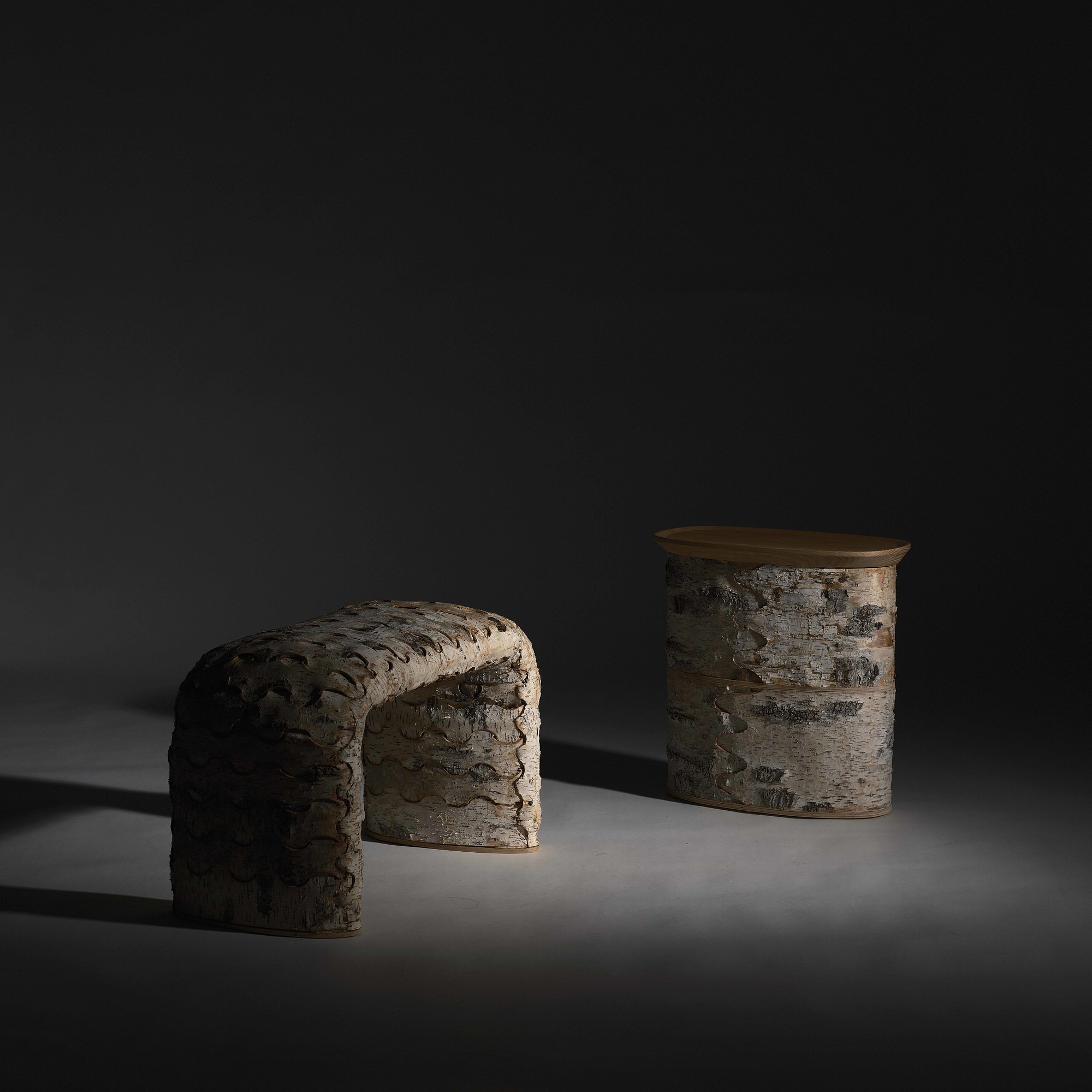
forestrest10
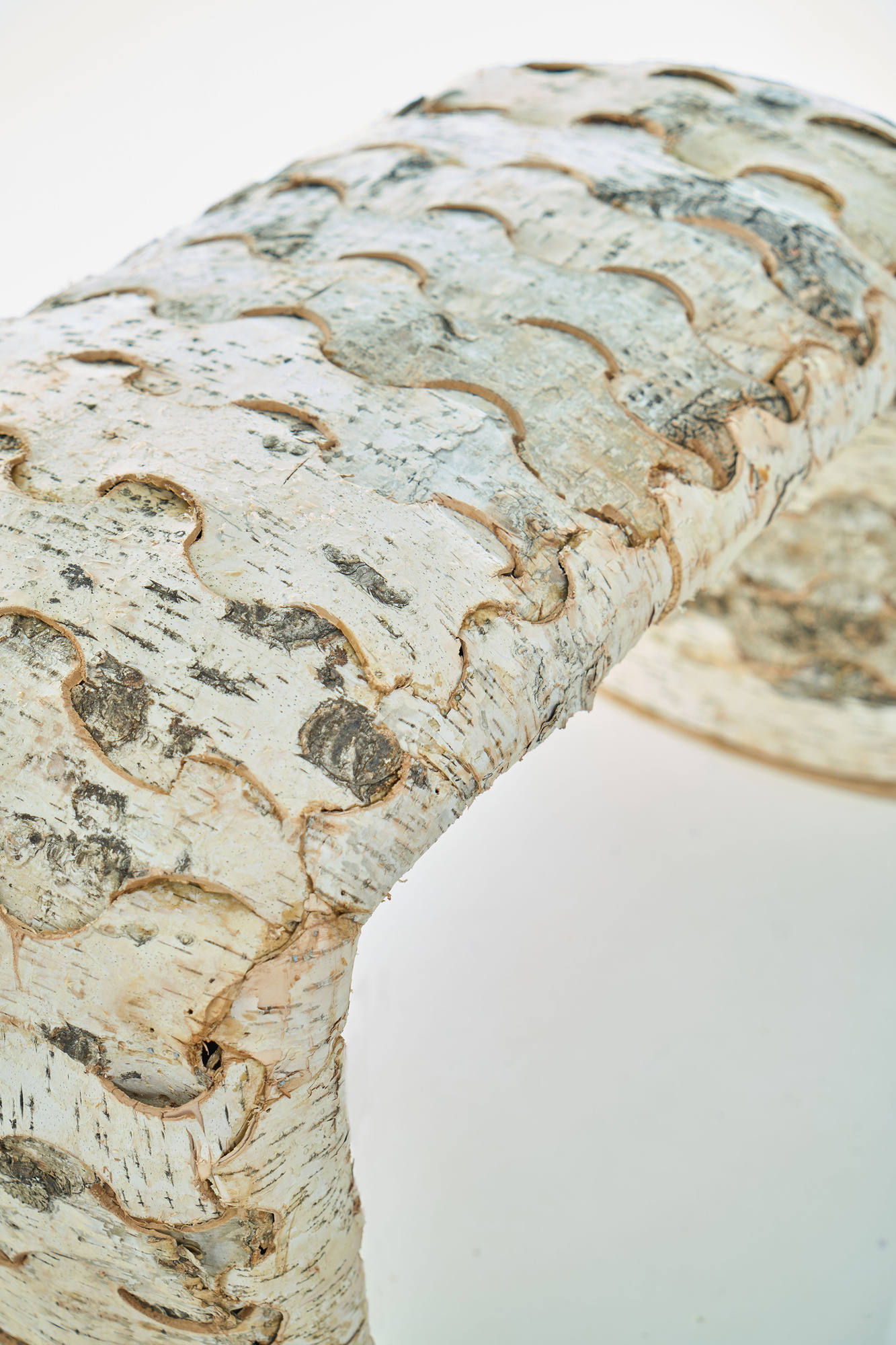
forestrest2
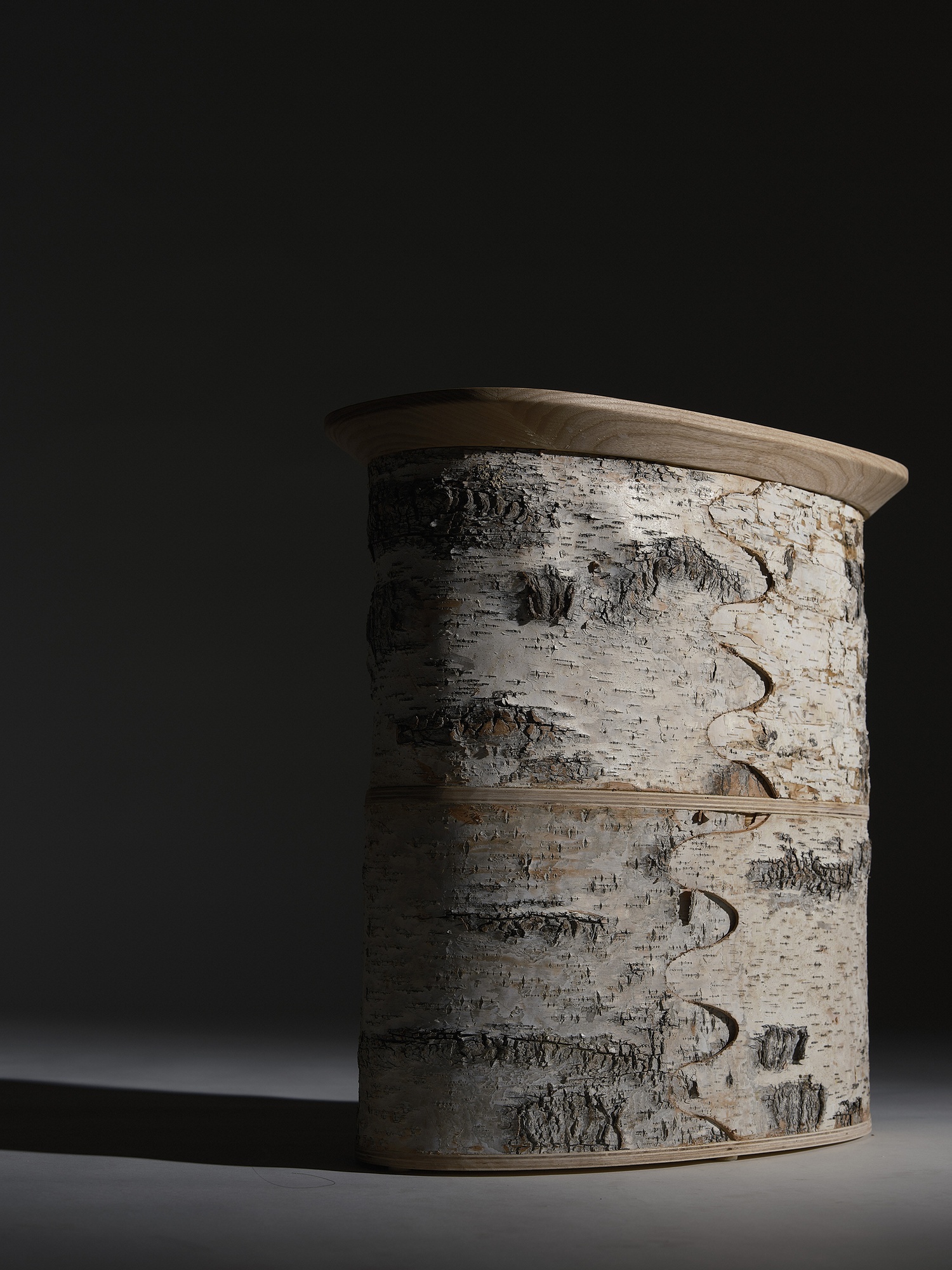
forestrest4
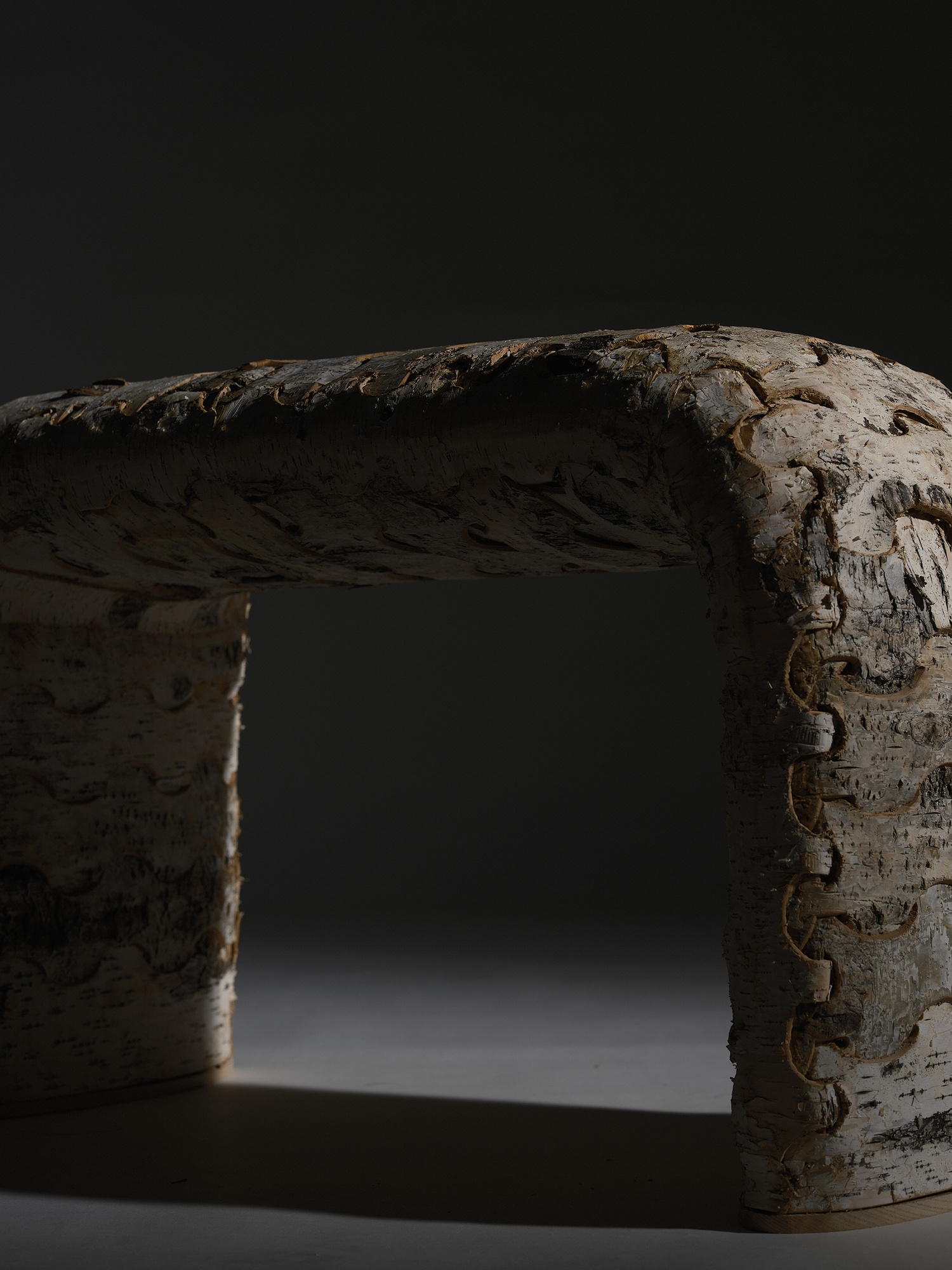
forestrest8
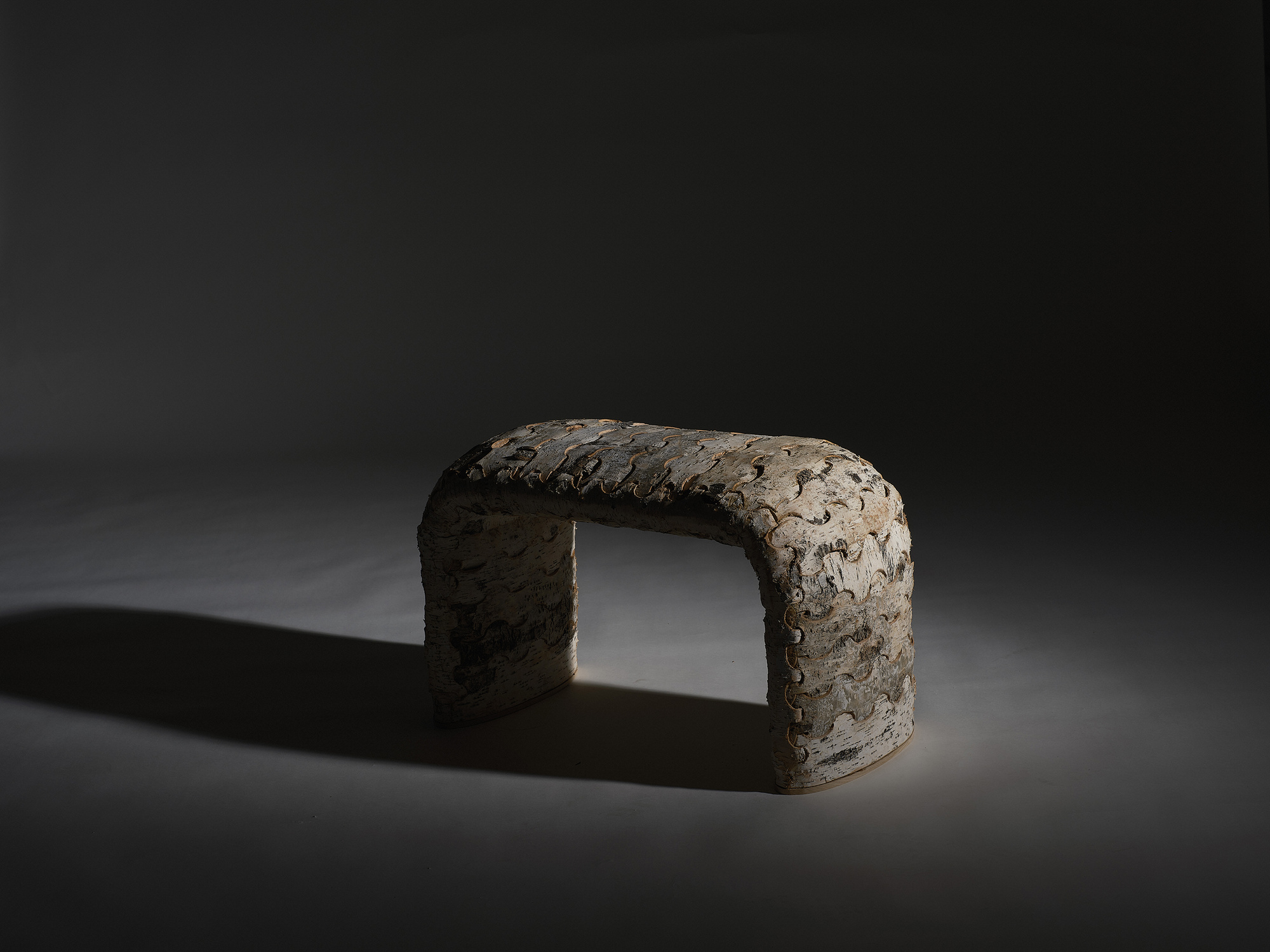
forestrest6
This series of works consists of small benches and sides, which are suitable for decoration and use in living rooms or public spaces. The exterior is spliced with birch bark and the interior is structurally supported by a wooden frame. As the main material, birch bark is collected from cold regions (such as the Greater Hinggan Mountains in northern China and Russian forests), which is a renewable and environmentally friendly resource. With its natural water resistance, toughness and unique texture beauty, it has long been widely used in daily life by the northern hunting minorities (such as the Oroqen and Ewenki), including the production of house coverings, storage containers and daily utensils. This design draws on the northern minority traditional bark technology, but in the method of innovation. Different from the traditional treatment of birch bark, I deliberately retained the natural texture of the material and showed a new art form through modern design language and technology. The adjusted splicing method not only improves the overall visual effect, but also strengthens the function and expression of birch bark in modern furniture. This series of works through the functional and cultural relevance, to meet the practical needs of furniture, but also to become a carrier of cultural narrative. Through the use of birch bark, I hope to explore the profound impact of modernization on the original ecological way of life since the industrial revolution. The wisdom of survival based on nature has been gradually forgotten in the process of industrialization, and this work aims to arouse people's attention and reflection on traditional crafts, natural materials and sustainable lifestyles.
In recent years, my work has focused on the deep values of China's indigenous culture and ecosystem, especially the handicraft traditions of the northern minorities. With birch bark as the core material, I explore its potential in furniture and interior decoration. This material is not only a gift of nature, but also a carrier of historical memory. It carries the survival wisdom of the northern hunting peoples (such as the Oroqen and Ewenki) to adapt to the harsh natural environment. Chinese design is undergoing a deep transformation from formal aesthetics to culture, and my creation is based on inheritance and innovation, combining local skills with modern design language, which provides a new perspective for this transformation. For example, the splicing process of birch bark, as a representative of the handicraft of ethnic minorities, has been reinterpreted in the design. This method not only respects the tradition, but also avoids the simple reproduction, and transforms the historical context into the contemporary design vocabulary. Through this creative practice, I hope to promote Chinese design to dig deeper into local cultural resources and show its unique charm on the global design stage. My work focuses on how design can serve society, particularly in the education and communication of environmental awareness and sustainability. Take birch bark as an example. This material has traditionally been used to make house coverings and daily tools, reflecting the efficient use of resources and the simple wisdom of life. However, with the impact of industrialization, this manual tradition gradually disappeared. I hope to draw attention to these legacies through design and introduce them into modern life through innovative design methods. In the creation, I try to follow the principle of circular economy, from the acquisition of materials, use to waste disposal are trying to be environmentally friendly. For example, birch bark and wood frame construction furniture can degrade after the end of its useful life. In my creation, the traditional splicing process is given the language of contemporary design. The arrangement and texture of bark pieces not only have visual beauty, but also symbolize the inheritance and continuation of a cultural memory.
At the same time, I also try to respond to the impact of the original ecological way of life since the industrial revolution through my works. Industrialization has brought convenience, but it has also weakened people's connection with nature. By rediscovering traditional materials and techniques, I hope to rediscover the link between nature and culture, and to think about how we can live with the environment in a more sustainable way in the future.
Born in 1980 in Hulunbuir, Inner Mongolia, Mongolian, is now a teacher at the Central Academy of Fine Arts. He has been committed to the study of the relationship between natural materials and design for a long time, and is good at expressing the subtle and profound relationship between people and things, man and nature with simple craftsmanship.
Sarina's creation is based on sustainable materials in the ecological environment, combining traditional crafts with modern design, and exploring the innovative application and cultural transformation of materials in contemporary design. She is good at showing the natural beauty of materials and the continuity of culture through simple design language and simple production methods, giving her works unique vitality and artistic expression.








